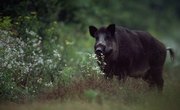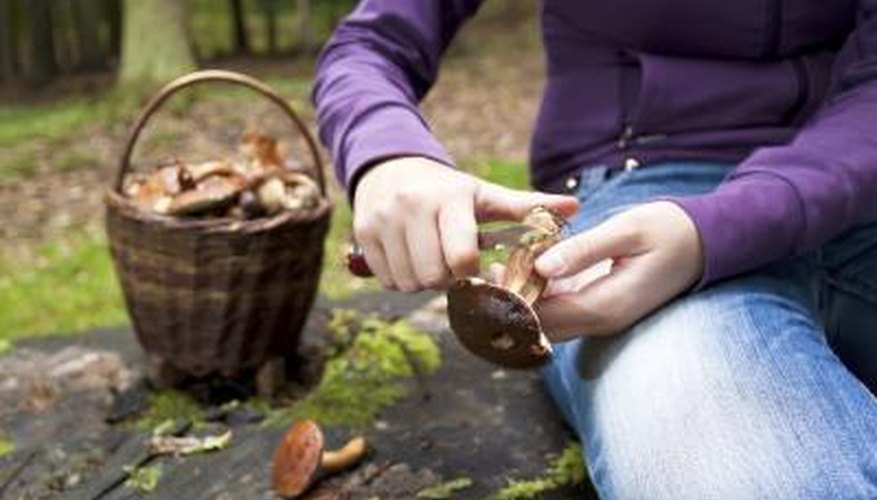
The damp conifer forests of the Pacific Northwest are the ideal breeding ground for edible wild mushrooms, and there's no better place to find them than in Oregon, where the fungi have become a big business. Mushroom gathering, however, comes with its dangers--lawless harvesters will try to protect lucrative hunting grounds from hobbyists, and poisonous mushrooms often masquerade as their edible counterparts. But if you know where to go and what you're looking for, wild mushroom hunting in Oregon can be well worth the risks.
Types
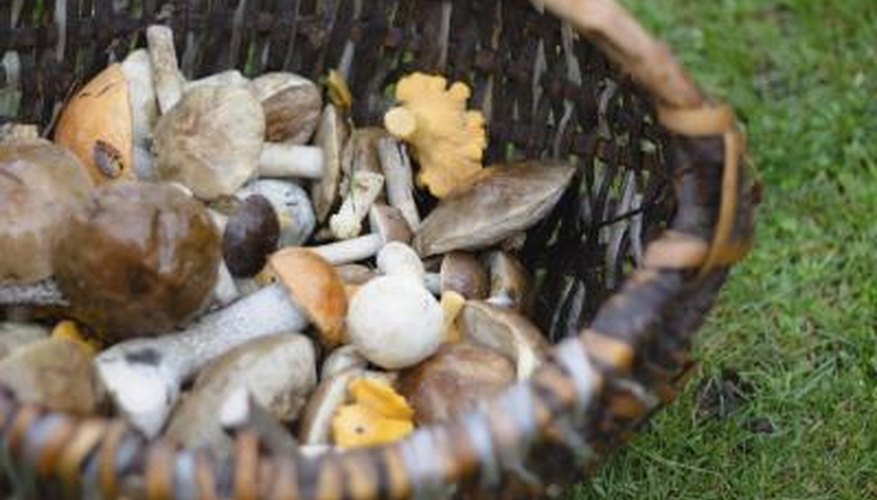
Tatiana_Sushchenia/iStock/Getty Images
Oregon's wild mushrooms are some of the most delectable in the world. Hunters can earn big bucks for a single day's harvest, so it's no wonder hobbyists and commercial pickers alike scour the state in search of the valuable fungi. The most popular--and tastiest--mushrooms found in Oregon are morels, golden chanterelles, king boletes and American matsutakes. Other edible species include the horn of plenty, the spreading-hedgehog, the shaggy parasol, the coral tooth, the black picoa and the Oregon white truffle.
When to Go

waldru/iStock/Getty Images
In general, the time to hunt for mushrooms is in the spring and fall when warm, wet weather provides ideal growing conditions. Each species, however, has its own "best" season. Edible morels are more abundant in the spring, and golden chanterelles and American matsutakes do better in the late summer and fall. King boletes can be found year-round depending on where you go--fall to spring at low elevations and late spring to summer in the high country.
Where to Go
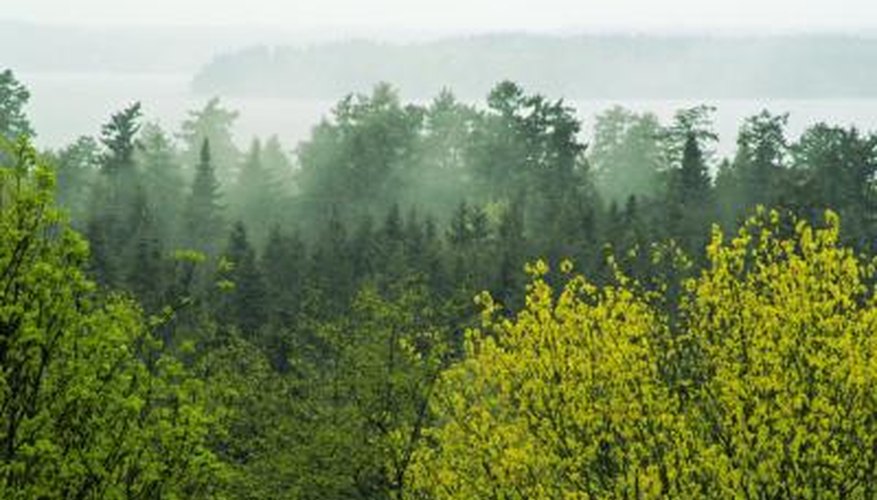
Matt Knannlein/iStock/Getty Images
Wild mushrooms can be found throughout Oregon's conifer and hardwood forests. Mycorrhizal mushrooms such as boletes and matsutakes rely on trees to survive, so it makes sense to look for them in heavily forested areas with lots of pine trees. Morels, on the other hand, fruit best in logged out or burned areas, so you'll want to search in clear-cuts or after a forest fire. Look for golden chanterelles in the state's hardwood forests. Always get permission from property owners if you intend to search on private land.
Permits

AnneMS/iStock/Getty Images
Personal use permits are required in most of the state's forests although they are usually free. They grant the holder the right to either one or two pounds of mushrooms per day, depending on where you go. Commercial permits, which waive the collection limits but must be purchased, are required on all public lands in the state. Requirements change frequently, so check with the Cascade Mycological Society for updated information and for a list of Forest Service and Bureau of Land Management offices in the state.
Cascade Mycological Society P.O. Box 110 Eugene Oregon 97440 [email protected] cascademyco.org
Things to Watch Out For
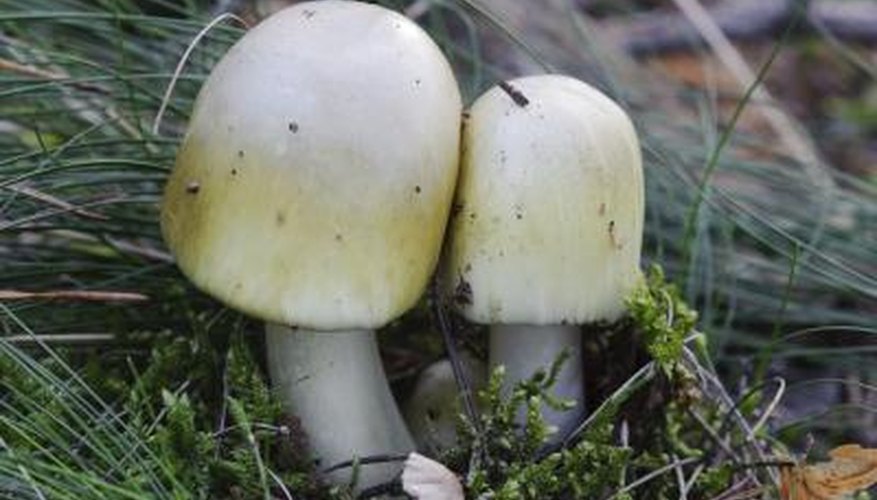
salparadis/iStock/Getty Images
The most important thing to be careful of while hunting wild mushrooms, by far, are the look-alikes--mushrooms that resemble their edible brethren. Some of these, like the aptly named death-cap, are toxic and are responsible for more than half of all mushroom-related fatalities--they are also common in Oregon. Take an illustrated guide book when you go and, if there is any doubt, don't pick it.
As the mushroom trade has become more lucrative in recent years, conflicts between mushroom hunters have become more frequent. Though encounters are rarely violent, people have been injured and even killed in run-ins with pickers who considered a certain section of the forest as their "territory." Use common sense when hunting for wild mushrooms in Oregon and, more often than not, you will have an enjoyable, delicious and perhaps even profitable experience.
References
Writer Bio
Michael Kerr is an award-winning freelance writer living in Portland, Oregon. He writes about business, health and travel for a number of publications including Portland Business Journal, Healthline Networks and USAToday, among others.


